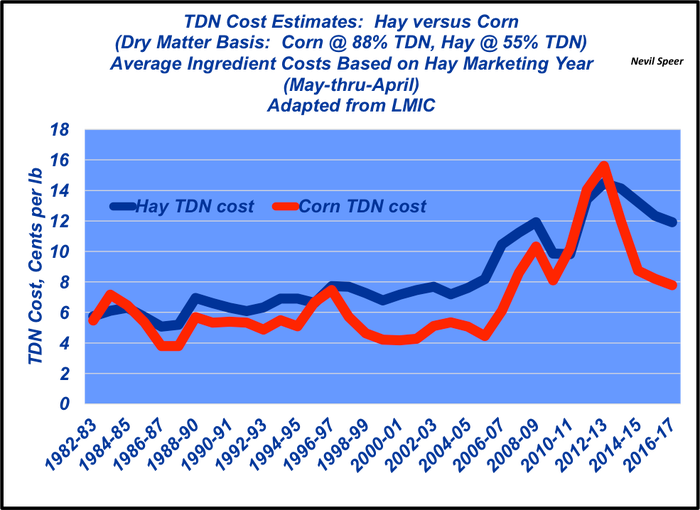Is corn still a viable feeding option?
Depending on cost comparisons, limited supplementation of corn may prove to be a more valuable, cost-efficient manner to add energy to diet of calving and nursing cows versus just feeding more hay.
January 26, 2017

Last week’s Industry At A Glance highlighted year-over-year changes in hay acreage. The column noted that hay acreage and subsequent prices will need to be monitored carefully in the coming years as beef cow inventory increases and hay exports become an increasingly important component of the hay market.
Meanwhile, corn production has proven to be more than ample in recent years. USDA is currently projecting record-large ending stocks of 2.404 billion bushels for the 2016-17 corn-marketing year. So, while feed costs have come down on both the forage and grain side, it remains important to make meaningful assessment of available feed sources – especially given livestock market trends in recent years.
Historically, corn has served as a relatively abundant and inexpensive source of energy. And typically, corn has proven more favorable as a supplemental energy source for beef cows when viewed on a cost-per-pound-of-TDN perspective. That’s been especially true during the past several years with corn gaining a distinct advantage versus hay.
Therefore, if extra energy is needed to maintain cows through the winter and into spring calving, one might want to make this comparison, based on local feed costs. It should be noted that excess supplementation of corn to beef cows on forage diets can prove undesirable – causing a shift in the rumen population and subsequent decline in digestibility of TDN initially available through forage.

Nevertheless, limited supplementation of corn may prove to be a more valuable, cost-efficient manner to add energy to the diet versus just feeding more hay.
Do you ever consider supplementing cows with corn to ensure they receive sufficient energy?
How do the costs in your area shake out for this type of comparison? Leave your thoughts in the comments section below.
About the Author(s)
You May Also Like





